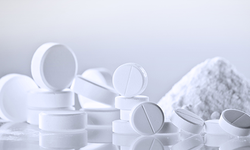Scientific papers
The issue of pellet coat damage in multi-unit pellet system (MUPS) tablets has been previously examined, with only limited success in addressing the problem. While the impact of lactose filler material attributes on pellet coat damage has been relatively well-explored, a comparable understanding for microcrystalline cellulose (MCC) is lacking, despite its high potential for cushioning. To address this gap, this study investigated the relationships between MCC attributes and pellet coat damage.
The use of single pellets in minitablets (SPIMs) allowed the isolation of pellet-filler effects, revealing the under-explored influence of risk factors found in MUPS tablets. MUPS tablets and SPIMs were prepared with various grades of MCC, along with pellets featuring either an ethylcellulose or acrylic coat at different compaction pressures. The extent of pellet coat damage was subsequently determined through dissolution tests, and two indicators were employed to quantify the nature of the damage.
An analytical approach, incorporating linear regression, correlations, and a classification and regression tree algorithm, was employed to evaluate how MCC attributes, including flowability, particle size, and plastic deformability, exerted varying influences on the extent of ethylcellulose and acrylic pellet coat damage. This comprehensive analysis enhanced the understanding of the different mechanisms underlying pellet coat damage for these two polymer types, providing valuable insights for future strategies to mitigate pellet coat damage.

Comments
No comments posted yet.
Add a comment














